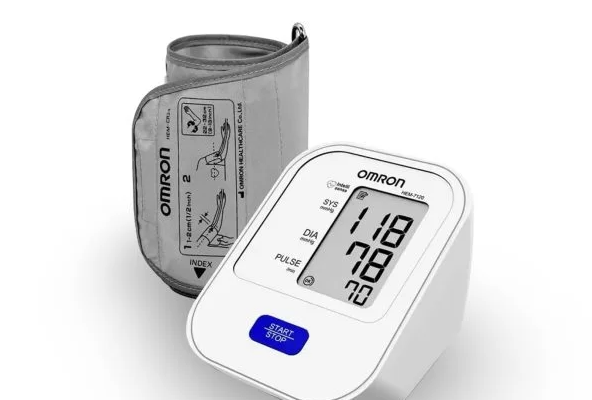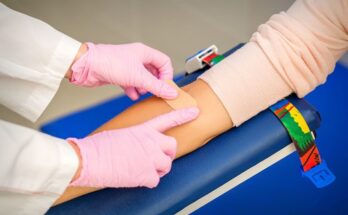According to CDS, only one in four adults have the condition under control. Blood pressure readings of 140 over 90 mm Hg are the case for at least 45 percent of persons with uncontrolled hypertension.
According to WHO, nearly 60% of deaths in India are due to non-communicable diseases. Whereas 27% is attributed to CVD, affecting 45% of people in the 40-69 age group. The National Institutes of Health (India) has aimed to decrease the rate of hypertension (high blood pressure) by 25% by 2025.
A blood pressure reading is the only reliable approach to diagnosing high blood pressure (also known as hypertension). Managing hypertension requires a thorough understanding of your test results. Blood pressure usually refers to the pressure exerted by the blood against the arterial walls.
According to AHA, the following are the healthy and the unhealthy blood pressure ranges:
- Normal blood pressure: A 120 over 80 is considered normal.
- A rise in blood pressure: A regular blood pressure reading should be between 120- and 129mm Hg for systolic and 80 mm Hg or below for diastolic, considered normal.
- Hypertension at Stage 1: The upper limit is 130-139 mm Hg, and the lower limit is 80- 89mm Hg.
- High blood pressure, stage 2: The upper number is at least 140 mm Hg, and the lower is at least 90 mm Hg.
- Low blood pressure: When the top number (systolic) of a person’s blood pressure reading is less than 90 mm Hg, or the bottom number (diastolic) is less than 50 mm Hg, this gets termed as low blood pressure (diastolic).
It is what your blood pressure numbers mean:
- Systolic Blood Pressure: (The first number) represents the force of your blood against the arterial walls every time your heart beats.
- Diastolic blood pressure: (The second number) reflects the force of blood against the arterial walls while the heart is at rest between beats.
The Best Digital BP Machine employs an oscillometric method wherein BP is determined by monitoring the cuff’s pressure. When a person’s blood pressure needs to be checked, they utilize a digital blood pressure machine, which involves inflating a cuff that goes around their arm or wrist with sufficient force to prevent blood flow in the main artery. The blood pressure measured by the pressure sensor at this point determines the systolic pressure.
It is advisable to take blood pressure readings at home with a validated, automatic bp monitor, ideally with memory storage to track blood pressure progression and an upper arm cuff of the correct size.
Measuring your blood pressure is not a substitute for seeing a doctor, Instead, patients tend to be more at ease at home than in a medical facility, thus helping do away with whitecoat hypertension. Whitecoat hypertension occurs when blood pressure readings at your doctor’s office are higher than at home.
Selecting a suitable home bp monitor is the initial step in performing regular blood pressure checks.
Here’s how to use a BP Monitor at home:
Whenever you are ready to take blood pressure,
- Locate a chair that provides adequate back support and settle at a table or desk.
- It’s best to sit quietly for three to five minutes before taking your blood pressure.
- Stretch out your legs completely, and put your arm on a table, so it’s at heart level. Relax your weight against the chair’s back. Raise your hand palm.
- It would help if you fastened the cuff around the upper arm a few inches above the elbow. In the case of a wrist, the monitor is placed directly over the wrist radial artery.
- Place the cuff so that the sensor gets positioned correctly, so make sure the tubing drapes over the middle of your forearm.
- Pull the cuffs until they are snug around the arm. Please put it on such that only two fingers fit under the top border of the cuff. When the cuff expands, ensure it doesn’t pinch your skin.
- Press the start button after a little delay in the beginning.
Please stay quiet and calm as the measurement machine begins. The device will take your blood pressure by inflating and deflating the cuff gradually. After taking a reading, the monitor will show your BP in digital form.
Here are a few things you need to be aware of before taking the readings: Size and placement of the cuff:
It’s crucial to ensure the correct size of the cuff, which depends on the size of your arm. Omron’s BP monitors come with a variety of features wherein
- Cuff Wrap Guide technology provides the user with visual cues to indicate whether the cuff is wrapped tightly enough to give an accurate blood pressure reading.
- Regardless of how you wear the cuff, the IntelliWrap’s 360-degree accuracy cuff in selected BP Monitors will always be spot-on by eliminating the possibility of errors while ensuring accuracy and consistency at
Before taking a reading,
- Do away with drinking and smoking 30 minutes before you take readings
- Empty your bladder before the reading
- Relax for three to five minutes with no talking.
- Relax your back by sitting upright and uncross your legs and ankles.
- Stay upright on the chair and set your arm down on a flat surface.
- Place the cuff over your naked upper arm. The cuff ought to be flawless and form-hugging. One fingertip should fit easily under the cuff.
- Make sure the cuff gets positioned correctly. The bottom of it must rest an inch above the bend in your elbow.
Wrap-Up:
This self-monitoring approach for blood pressure helps keep tabs on health without raising the alarm.



